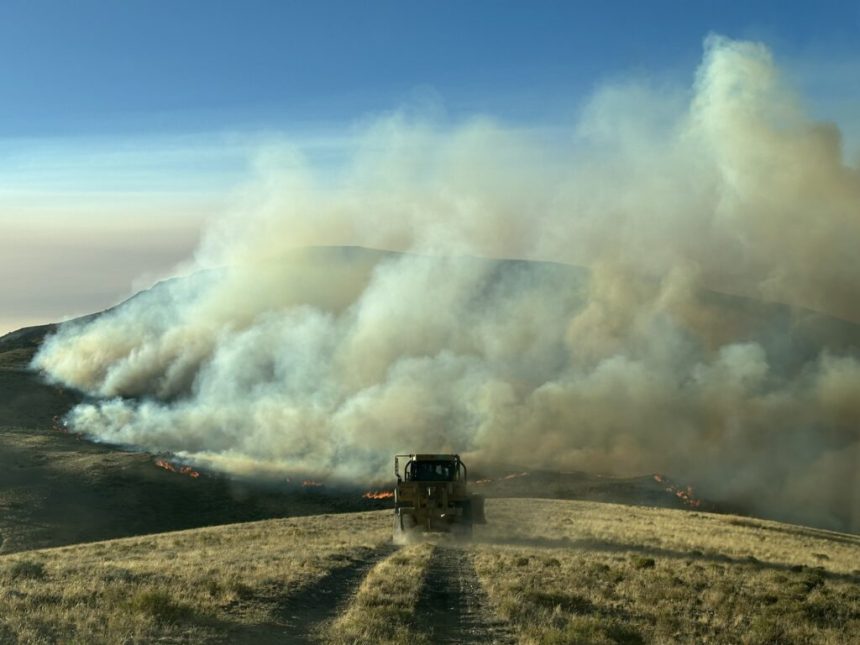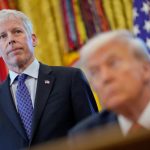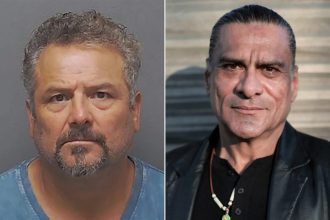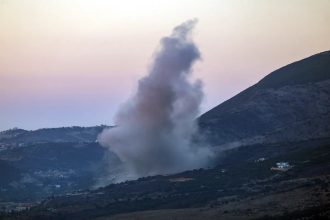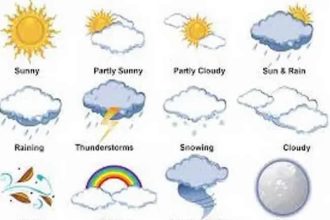A dozer approaching the September 2024 Lake Mountain Fire south of Tuscarora in Elko County. (Photo by Jeremiah Braun, Bureau of Land Management/National Interagency Fire Center)
In Nevada, the majority of wildfires happen in the summer – but not all. And this year, dry conditions and strong winds have the potential to fuel destructive late-year fires.
Wildfires in Nevada are typically from July to September when vegetation has been baked dry, heat is high and precipitation is low. However, some of the region’s most destructive fires can occur in the fall when snow hasn’t piled up yet, and seasonal wind patterns can make a fire spread fast.
Last year, wildfires from October through November accounted for a fourth of all Nevada wildfires. From Oct. 1 through Nov. 30 nearly 70 fires burned through more than 26,000 acres of wilderness, according to the Nevada Fire Stats dashboard.
The majority of acres burned that fall came from one wildfire in October – the Castle Ridge Fire in Elko County. It was also the largest wildfire in the state in 2024, burning through about 25,000 acres of land in 11 days before finally being contained. Strong winds at the time threatened to spread the fire towards the town of Midas, Nevada, located less than three miles away.
Some of the Great Basin’s most destructive wildfires can occur in fall or early winter due to the arrival of dry winds that typically happen in the cooler months.
“That’s the thing that people miss more often. It’s not that it’s more likely to happen, it’s that it’s still likely to happen,” said Brock Uhlig, the State Fire Management Officer for BLM Nevada. “100% they still occur, and it is still something that we need to be mindful of and ready for.”
Strong winds alone don’t create wildfire, but as climate change drags dry weather later into the fall and early winter, fire season is more likely to overlap with the kind of hazardous wind conditions that can make fires spread more quickly and more difficult to control.
In 2025, Nevada is already experiencing the largest wildfire season since 2020, Uhlig said. Since January, about 570 fires have burned through nearly 260,000 acres of wilderness in Nevada.
Healthy winter snowpacks last year created conditions that also allowed highly flammable invasive cheatgrass to multiply, while drought dried out vegetation across Nevada’s valleys.
“There was a lot of carryover grass that we had, especially in Northern Nevada, like Humboldt County, Elko County areas, and that really was the driver for our large fires this year,” Uhlig said.
Those conditions are likely to continue into the fall and early winter. Several parts of Nevada have above normal fuel loads that could lead to wildfires, according to the National Interagency Fire Center’s October report.
In northern and western Nevada fine fuels, like cheatgrass, are above normal and could lead to large wildfires if they dry out and ignite. Until snow begins to fall, the region could be at risk of major wildfires during periods of strong winds after prolonged dry periods. Parts of central Nevada are also covered in above-normal fine fuel, according to the report.
Drought conditions have persisted in much of the Great Basin this fall, including Nevada. Precipitation was also just below normal across much of eastern Nevada, and drought conditions have expanded across the state, according to the report.
Wildfires in the state this year have been fueled by grasses dried out by drought and dry storms that bring more lightning than rain, said Uhlig.
“The bulk of our fire starts were from lightning. We had a little lightning bust last week that gave us quite a few incidents across the state,” Uhlig said. “There’s always a fine line between thunderstorms that come through and give us good rain that makes fires easier to suppress and storms where there’s not much rain that hits the ground at all.”
While about half of wildfires this year were caused by lightning striking dry vegetation, the other half was caused by humans, according to Nevada Fire Stats.
Cooler fall weather can increase the use of public lands and the risk of human caused wildfires.
“It’s the last chance to go out camping, it’s hunting season. All of us love to go out and use public lands in the fall,” Uhlig said.
Hunting season, in particular, sees a rise in unintentional fire starts. Target shooting on dry grass can send sparks into dead, dry, and highly flammable vegetation.
In 2018, a massive wildfire blackened one of Nevada’s most popular recreation areas in Elko’s Ruby Mountains after a fire broke out near a shooting range on private land. The wildfire started Sept. 30 and lasted into early October, burning through about 5,000 acres of wilderness.
“The thing that helps the most is not not driving off road. High grass building up under vehicles – hot mufflers hitting grass – can result in a fire. Make sure you have a shovel and water with you if you’re going to have a campfire.” Uhlig said. “All of our standard fire prevention needs remain valid no matter what time of year it is.”


